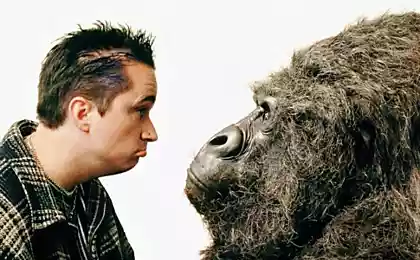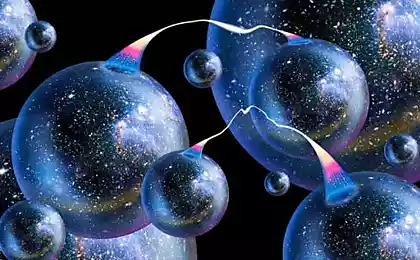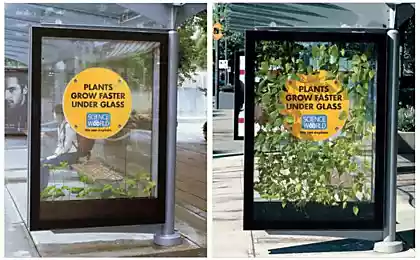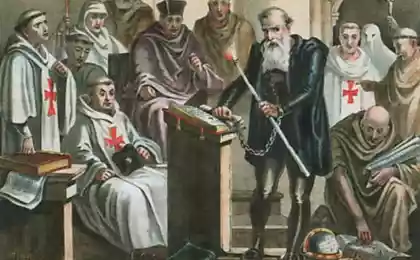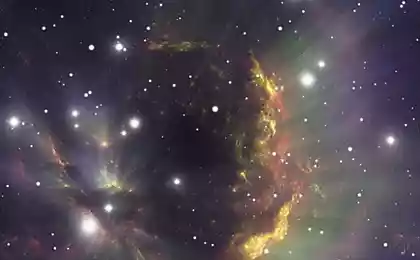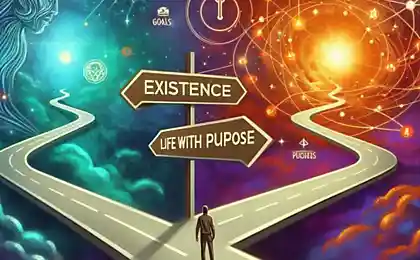810
10 attempts to explain the existence of life without the Darwinian theory of evolution
For centuries, people have tried to explain the origin of life, and some of these explanations were very originalny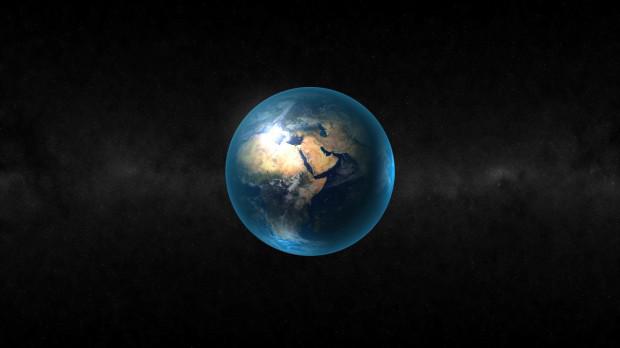
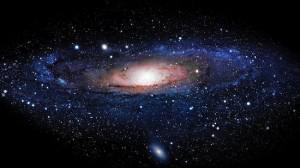
After a world tour Charles Darwin eventually came to believe that nature is dominated system, which he called "natural selection", and that, in turn, is a process of evolution. Simply put, the organisms that live long enough to reproduce offspring, passed him his genetic memory. If the body for various reasons, died without issue, its characteristics do not appear in the gene pool. Over time, the build-up characteristics may lead to a completely new species that are more adapted to the environment than their predecessors.
Now the theory of evolution is accepted by the scientific community as a fact. However, there were people who even before Darwin tried to explain why the life around us, such as it is. There were those who came after him to clarify or refute the theory.
1. "Paradise Mountain" Karl Linneya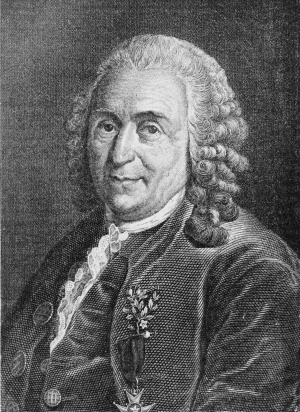
Darwin's predecessor Carl Linnaeus (1707-1778) has made the most significant contribution to modern biogeography. Like many people of his time, Linnaeus believed that the Genesis flood was true. Thus, any hypothesis, which he formulated, was to somehow meet the above picture of the world. To achieve this, Linnaeus formulated the idea of "heavenly mountains". He suggested that somewhere on the equator used to be a large island with a mountain. It was the cradle of life, all living organisms have appeared there. When the water receded from the island, the animals living there, left the mountain and settled in other places of the planet.
Linnaeus, of course, was a big celebrity in his time. But even now, his hypothesis is accepted in bayonets. How would animals like penguins to survive while crossing the desert to get to his Antarctic home?
2. "Northern Spring" by Georges-Louis Leclerc, Comte de Byuffona
Darwin's predecessor, Georges-Louis Leclerc, Comte de Buffon (1707-1788) was a French scientist, who once accidentally decided to write a 44-volume collection of human knowledge about the world of nature. It was called edition Historie Naturelle. And yet Buffon said that individual, isolated regions of the world have a special set of flora and fauna. For example, despite the fact that the Arctic and the Antarctic climate is similar, in the north of the penguins there. This observation was to become the "law of Buffon," and the law does not require proof because of its obviousness.
Buffon Linnaeus rejected the idea of a "mountain paradise" and suggested that God had created all living things in the form in which it is somewhere near the North Pole in a warm period, after which the animals and spread across the planet. Such a hypothesis, he found more plausible than the distribution of animals with some mountains at the equator.
3. "Mountains of origin" Karl Vildenova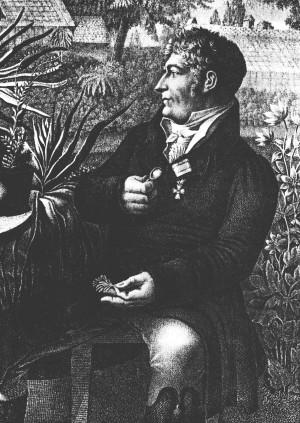
Preceded by Carl Ludwig villedaigne Darwin (1765-1812) was a German scientist, first and foremost botanist. Like Linnaeus, villedaigne could classify thousands of plant species. At the time of his death in his herbarium was about 20,000 numbered copies, and the herbarium today can be seen in the Berlin Botanical Garden.
Villedaigne took the concept of "heavenly mountains", and tried to develop it, suggesting that instead of a few mountains were mountains rising above the sea level during the flood. Apparently villedaigne reached to this idea because of its concern for the plants. Since they are immobile, he probably could not imagine a different kind of plants growing only in one place in the world.
4. "Evolution" Jean-Baptiste Lamarka
Jean-Baptiste Lamarck (1744-1829) was also a precursor of Darwin, and if you ever studied biology, you probably heard about it. Textbooks loved to criticize because of his ideas on evolution were obviously wrong.
Lamarck's hypothesis about the evolution is largely centered around the idea of "use and disuse". He once remarked that in many organisms have a rudimentary education, and suggested that animals that often use an organ or limb, change to even better adapted to their use. The attributes acquired during the life of one of the parents, it can be transmitted to offspring.
For example, if some can be very giraffe's neck to pull in order to get to the tasty leaves, then all offspring of a giraffe would have longer necks.
The idea of "use and disuse" was a good working hypothesis until Mendel with his genetics. And when genetics was founded, the concept of Lamarck hole appeared. For example, if one of your parents had lost a leg in a car accident, this does not mean that you are born into the world without a leg. Or your parent may be obsessed with pumping biceps. But this does not mean that you will automatically get born big muscles.
5. "Basic form", the author neizvesten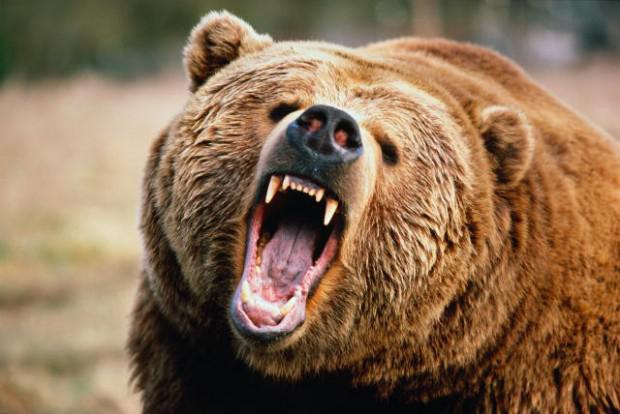
The woman with the nickname "X-evolutionist" was born after Darwin. She - a blogger, and its intention is quite specific, it can be seen from its nickname. She has no great academic merit, like others in this list, however, have their own ideas about the evolution of species.
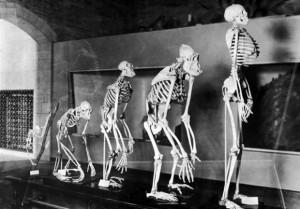
X-evolutionist suggests that the planet there are a number of basic forms of animals, such as cats, dogs or bears. People may look different because it adapted to the environment, but we are still all the same views, the ability to reproduce.
This logic applies X-evolutionist and other animals. She argues that the dogs, wolves and coyotes - in fact one and the same animal that just looks different, as adapted to the environment. The same idea applies to bears: a white, a grizzly, to black. This idea of X-evolutionist and uses as an argument against protecting endangered species, because they think that no form of life can not be completely destroyed.
6. "Apeiron" Anaksimandra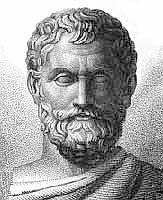
Preceded by Darwin Anaximander (610-546 BC. E.) Was an ancient philosopher who once in a stylish manner Greek summarized his views and conclusions about the world in a long poem called "On Nature". Now, when researchers look back, it seems the idea of Anaximander proto-evolutionary theory. Anaximander suggested that the Earth was originally created from formless matter, which was called "Apeiron". Plants and animals in the world emerged from the mud, and the earliest animals on the planet was a fish, from which there was a man. In addition to that poem Anaximander tried to create one of the first maps of the world, as well as some dabbled in astronomy. Unfortunately, most of his work has been lost, so there is no way to know whether he studied the fossil, and whether it is based on a poem of real field observations, or whether it is based on a simple everyday mythology.
7. "The Selfish Gene" by Richard Dokinza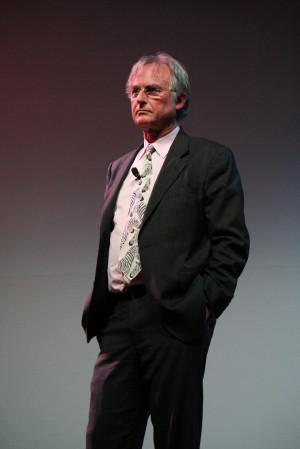
In 60 years, biologists have started to believe that we can better understand the "natural selection" Darwin, if we consider how it works at the level of genes. This idea was popularized by the famous biologist Richard Dawkins in his book "The Selfish Gene", published in 1976. A look at the evolution through the lens of genetics suggests that every gene in an organism competes with the same genes, but another version. Based on this, Dawkins argues that it is inappropriate to think of development at the level of the body, because in this case it is assumed that all genes in an organism work together rather than compete with each other. A look at the evolution in terms of genetics makes sense if we assume that life on earth originated from a primordial soup. And, of course, Dawkins's theory, like any other, there are plenty of opponents.
8. "neutral theory of molecular evolution" Motoo Kimury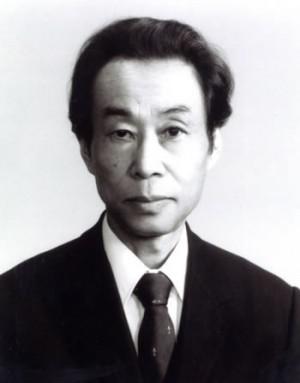
Motoo Kimura (1924-1994) was a respected Japanese biologist who has worked both in Japan and in the United States, and was the author of hundreds of scientific papers. Kimura promote biological concepts such as migration, genetics and natural selection. Perhaps one of the most important of his ideas was that some evolutionary changes at the molecular level are not always serve their actual targets, ie they simply remain neutral in the common struggle for existence. Subsequently, the concept has become known as the "neutral theory of molecular evolution».
This theory is very easily misinterpreted. Organism or the population as a whole may be produced by natural selection to adapt to a particular niche, but Kimura assumed that each population or organism have mutations that do not have adaptive advantages, but still present in the population due to the so-called "antigenic drift." That is the theory of Kimura's not ignore the importance of natural selection at the level of an organism or a population, but it assumes that every component of the body is the result of natural selection.
9. "The struggle for existence," Al-Dzhahiza
The predecessor of Darwin Al-Jahiz (776-868) was a scientist who was interested in various topics. His most famous work, extant, called "Animals." In this book he shares his biological observations, which are very similar to Darwin's theory of evolution.
His idea of Al-Jahiz built on three main reasons: the struggle for existence, transformation of species and environmental factors. Al-Jahiz believed that every person, in fact, all life is at war with the other. Environmental factors help to living organisms gradually develop new features until turning them into completely different organisms, and it allows them to compete successfully in the struggle for survival.
10. "The laws of organic life" Erasmus Darvina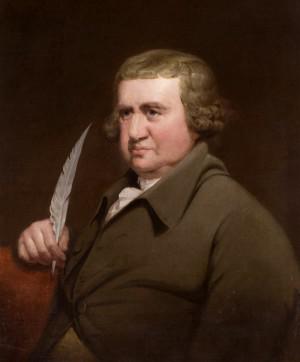
Erasmus Darwin (1701-1832) was a forerunner of Charles Darwin and his grandfather. Concurrently, he was one of the intellectual heavyweights of the 18th century. It was not only a naturalist and botanist, but also a doctor, philosopher and poet. Like Anaximander, Erasmus liked to record their observations of wildlife in verse. Exclusivity Erasmus was that he used an integrated approach to monitor life. By studying the animals, he saw animals both wild and domestic, he studied paleontology, biogeography, embryology and anatomy.
Once Erasmus hypothesized that says that life on earth originated from a common ancestor, and struggled to explain how this evolved separate species. He had never heard about the ideas of Lamarck, and did not read his works, but despite that his ideas were very similar to the ideas of "use and disuse" Lamarck. At the same time, Erasmus anticipated the theory of his grandson, expanding the scope of "use and disuse" and suggested that the animals may also change as a result of sexual selection and competition.
via factroom.ru


After a world tour Charles Darwin eventually came to believe that nature is dominated system, which he called "natural selection", and that, in turn, is a process of evolution. Simply put, the organisms that live long enough to reproduce offspring, passed him his genetic memory. If the body for various reasons, died without issue, its characteristics do not appear in the gene pool. Over time, the build-up characteristics may lead to a completely new species that are more adapted to the environment than their predecessors.
Now the theory of evolution is accepted by the scientific community as a fact. However, there were people who even before Darwin tried to explain why the life around us, such as it is. There were those who came after him to clarify or refute the theory.
1. "Paradise Mountain" Karl Linneya

Darwin's predecessor Carl Linnaeus (1707-1778) has made the most significant contribution to modern biogeography. Like many people of his time, Linnaeus believed that the Genesis flood was true. Thus, any hypothesis, which he formulated, was to somehow meet the above picture of the world. To achieve this, Linnaeus formulated the idea of "heavenly mountains". He suggested that somewhere on the equator used to be a large island with a mountain. It was the cradle of life, all living organisms have appeared there. When the water receded from the island, the animals living there, left the mountain and settled in other places of the planet.
Linnaeus, of course, was a big celebrity in his time. But even now, his hypothesis is accepted in bayonets. How would animals like penguins to survive while crossing the desert to get to his Antarctic home?
2. "Northern Spring" by Georges-Louis Leclerc, Comte de Byuffona

Darwin's predecessor, Georges-Louis Leclerc, Comte de Buffon (1707-1788) was a French scientist, who once accidentally decided to write a 44-volume collection of human knowledge about the world of nature. It was called edition Historie Naturelle. And yet Buffon said that individual, isolated regions of the world have a special set of flora and fauna. For example, despite the fact that the Arctic and the Antarctic climate is similar, in the north of the penguins there. This observation was to become the "law of Buffon," and the law does not require proof because of its obviousness.
Buffon Linnaeus rejected the idea of a "mountain paradise" and suggested that God had created all living things in the form in which it is somewhere near the North Pole in a warm period, after which the animals and spread across the planet. Such a hypothesis, he found more plausible than the distribution of animals with some mountains at the equator.
3. "Mountains of origin" Karl Vildenova

Preceded by Carl Ludwig villedaigne Darwin (1765-1812) was a German scientist, first and foremost botanist. Like Linnaeus, villedaigne could classify thousands of plant species. At the time of his death in his herbarium was about 20,000 numbered copies, and the herbarium today can be seen in the Berlin Botanical Garden.
Villedaigne took the concept of "heavenly mountains", and tried to develop it, suggesting that instead of a few mountains were mountains rising above the sea level during the flood. Apparently villedaigne reached to this idea because of its concern for the plants. Since they are immobile, he probably could not imagine a different kind of plants growing only in one place in the world.
4. "Evolution" Jean-Baptiste Lamarka

Jean-Baptiste Lamarck (1744-1829) was also a precursor of Darwin, and if you ever studied biology, you probably heard about it. Textbooks loved to criticize because of his ideas on evolution were obviously wrong.
Lamarck's hypothesis about the evolution is largely centered around the idea of "use and disuse". He once remarked that in many organisms have a rudimentary education, and suggested that animals that often use an organ or limb, change to even better adapted to their use. The attributes acquired during the life of one of the parents, it can be transmitted to offspring.
For example, if some can be very giraffe's neck to pull in order to get to the tasty leaves, then all offspring of a giraffe would have longer necks.
The idea of "use and disuse" was a good working hypothesis until Mendel with his genetics. And when genetics was founded, the concept of Lamarck hole appeared. For example, if one of your parents had lost a leg in a car accident, this does not mean that you are born into the world without a leg. Or your parent may be obsessed with pumping biceps. But this does not mean that you will automatically get born big muscles.
5. "Basic form", the author neizvesten

The woman with the nickname "X-evolutionist" was born after Darwin. She - a blogger, and its intention is quite specific, it can be seen from its nickname. She has no great academic merit, like others in this list, however, have their own ideas about the evolution of species.

X-evolutionist suggests that the planet there are a number of basic forms of animals, such as cats, dogs or bears. People may look different because it adapted to the environment, but we are still all the same views, the ability to reproduce.
This logic applies X-evolutionist and other animals. She argues that the dogs, wolves and coyotes - in fact one and the same animal that just looks different, as adapted to the environment. The same idea applies to bears: a white, a grizzly, to black. This idea of X-evolutionist and uses as an argument against protecting endangered species, because they think that no form of life can not be completely destroyed.
6. "Apeiron" Anaksimandra

Preceded by Darwin Anaximander (610-546 BC. E.) Was an ancient philosopher who once in a stylish manner Greek summarized his views and conclusions about the world in a long poem called "On Nature". Now, when researchers look back, it seems the idea of Anaximander proto-evolutionary theory. Anaximander suggested that the Earth was originally created from formless matter, which was called "Apeiron". Plants and animals in the world emerged from the mud, and the earliest animals on the planet was a fish, from which there was a man. In addition to that poem Anaximander tried to create one of the first maps of the world, as well as some dabbled in astronomy. Unfortunately, most of his work has been lost, so there is no way to know whether he studied the fossil, and whether it is based on a poem of real field observations, or whether it is based on a simple everyday mythology.
7. "The Selfish Gene" by Richard Dokinza

In 60 years, biologists have started to believe that we can better understand the "natural selection" Darwin, if we consider how it works at the level of genes. This idea was popularized by the famous biologist Richard Dawkins in his book "The Selfish Gene", published in 1976. A look at the evolution through the lens of genetics suggests that every gene in an organism competes with the same genes, but another version. Based on this, Dawkins argues that it is inappropriate to think of development at the level of the body, because in this case it is assumed that all genes in an organism work together rather than compete with each other. A look at the evolution in terms of genetics makes sense if we assume that life on earth originated from a primordial soup. And, of course, Dawkins's theory, like any other, there are plenty of opponents.
8. "neutral theory of molecular evolution" Motoo Kimury

Motoo Kimura (1924-1994) was a respected Japanese biologist who has worked both in Japan and in the United States, and was the author of hundreds of scientific papers. Kimura promote biological concepts such as migration, genetics and natural selection. Perhaps one of the most important of his ideas was that some evolutionary changes at the molecular level are not always serve their actual targets, ie they simply remain neutral in the common struggle for existence. Subsequently, the concept has become known as the "neutral theory of molecular evolution».
This theory is very easily misinterpreted. Organism or the population as a whole may be produced by natural selection to adapt to a particular niche, but Kimura assumed that each population or organism have mutations that do not have adaptive advantages, but still present in the population due to the so-called "antigenic drift." That is the theory of Kimura's not ignore the importance of natural selection at the level of an organism or a population, but it assumes that every component of the body is the result of natural selection.
9. "The struggle for existence," Al-Dzhahiza

The predecessor of Darwin Al-Jahiz (776-868) was a scientist who was interested in various topics. His most famous work, extant, called "Animals." In this book he shares his biological observations, which are very similar to Darwin's theory of evolution.
His idea of Al-Jahiz built on three main reasons: the struggle for existence, transformation of species and environmental factors. Al-Jahiz believed that every person, in fact, all life is at war with the other. Environmental factors help to living organisms gradually develop new features until turning them into completely different organisms, and it allows them to compete successfully in the struggle for survival.
10. "The laws of organic life" Erasmus Darvina

Erasmus Darwin (1701-1832) was a forerunner of Charles Darwin and his grandfather. Concurrently, he was one of the intellectual heavyweights of the 18th century. It was not only a naturalist and botanist, but also a doctor, philosopher and poet. Like Anaximander, Erasmus liked to record their observations of wildlife in verse. Exclusivity Erasmus was that he used an integrated approach to monitor life. By studying the animals, he saw animals both wild and domestic, he studied paleontology, biogeography, embryology and anatomy.
Once Erasmus hypothesized that says that life on earth originated from a common ancestor, and struggled to explain how this evolved separate species. He had never heard about the ideas of Lamarck, and did not read his works, but despite that his ideas were very similar to the ideas of "use and disuse" Lamarck. At the same time, Erasmus anticipated the theory of his grandson, expanding the scope of "use and disuse" and suggested that the animals may also change as a result of sexual selection and competition.
via factroom.ru
Your "repressed memories, hidden in the depths of memory" does not exist
Amazing experiment mixed output
